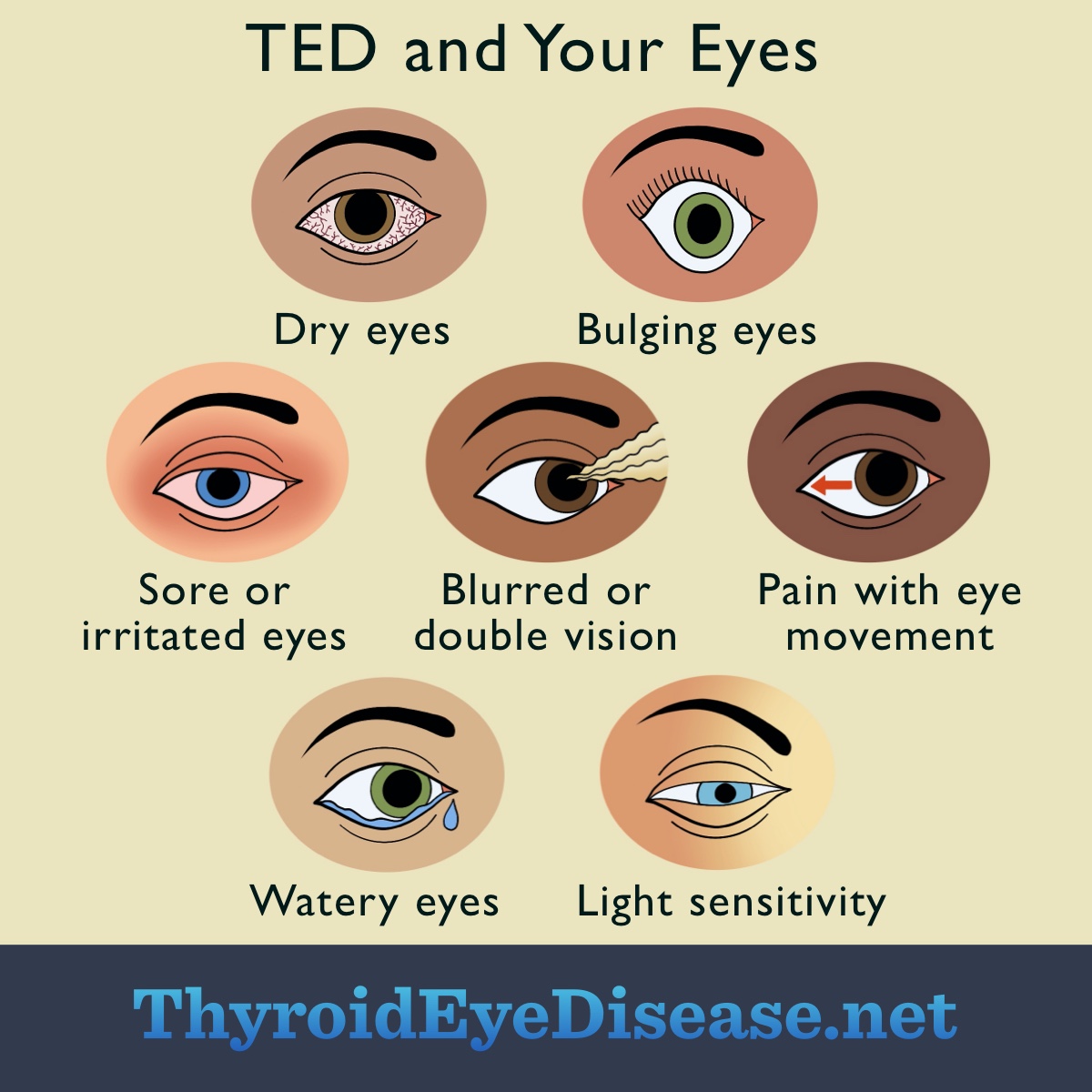How Does Thyroid Eye Disease Affect The Eyes?
Reviewed by: HU Medical Review Board | Last reviewed: October 2021 | Last updated: March 2024
The way that thyroid eye disease (TED) affects the eyes varies from person to person. Some people will have mild symptoms, while others have severe impacts on their eyes and vision. Early diagnosis and getting the right care are key to reducing the risk for severe complications from TED.1
TED is a rare autoimmune disease. Autoimmune disease results from the body’s immune system mistaking healthy cells and tissue from harmful invaders like viruses, fungi, or bacteria. Because it cannot tell the difference, the immune system attacks and damages healthy cells.1,2
Antibodies are proteins your body makes to kill germs. In TED, harmful antibodies attack various parts of the body, including the tissues around the eyes. This results in inflammation and damage to the muscles, connective tissues, and fat behind and around the eyes. Damage and inflammation get worse over time (progressive), with an active and inactive phase.1,3
Knowing how TED affects your eyes can give you a better understanding of the disease.
Parts of the eye
Eyelid
Your eyelid is a fold of skin that closes over your eye in order to protect the eye. There are upper and lower eyelids.4,5
Cornea
The cornea is a thin, clear membrane covering the surface of the eye. The cornea serves 2 main purposes: protection and refraction (bending) of light for normal vision.4
Conjunctiva
The conjunctiva is a thin layer of tissue that lines your eyelid and the outside of your eyeball. This tissue helps keep your eyelid and eyeball moist.4
Eye muscles
The eye sits in a bony socket called the orbit. Six muscles attach from the orbit to the eyeball, allowing the eye to move.4,6
Fat tissue
Fatty tissue fills the space between the eye muscles and the bony orbit. Its purpose is to cushion the eyeball from the bone.4
Optic nerve
The optic nerve is a bundle of nerve fibers in the eye that transmits signals to the brain for vision.7
In a healthy eye, there is no swelling behind the eyes. Muscle and fat behind the eye do not press on the optic nerve, ensuring normal vision.8
How TED affects the eyes
The most common way TED affects the eyes is inflammation and dry eye. TED can cause symptoms of eye watering, grittiness, and pain. Bright lights may be painful or increase your discomfort. Other ways TED affects your eyes include:8
- Your eyelids can get red and swollen, which might be more noticeable in the morning.
- Your eyes may look like they are bulging out of your eye sockets. TED causes swelling to the muscles and fat behind your eyeball, which pushes your eye forward. This is called exophthalmos (ek-sof-thal-mus) or proptosis (prop-toe-sis).
- Eyelid retraction is when your upper eyelid rises due to pulling and tightness of the eyelid tissue. This can give you a “staring” appearance because more of the white of your eye is exposed.
- Both proptosis and retraction lead to dry eye symptoms. The surface of your eye needs a balance of moisture and protection to keep it healthy. Your eyelids wash tears over the surface of the eye for this purpose. If you are not able to blink properly, your eye’s surface can dry and become damaged.
- Moving your eyes might be painful. Pressure and irritation on the bony orbit of your eye can cause discomfort.
- Swelling in the muscles that move the eyeball makes it hard or impossible for the eyes to move together. This can lead to misalignment of your eyes, known as strabismus (strah-biz-mus). Misalignment can lead to double vision known as diplopia (dip-low-pee-ah). Double vision may happen when you look in a certain direction, or it could be there all the time.
- Swelling of the muscles, fat, and surrounding tissue of the eye can increase the pressure inside your eye sockets. This increased pressure can squeeze the optic nerve. This can cause blurring or dimming of your vision. If you have any changes to your vision, see your doctor right away. Optic nerve compression is a medical emergency, and your vision is at risk.
Symptoms of TED can be difficult to cope with. What might seem “mild” or “minor” to others can be disrupting and problematic for you.
Talk to your doctor about your symptoms and how TED affects your eyes. The impact of these symptoms on daily life varies, and your doctor needs to know in order to get you the treatment you need and deserve.
